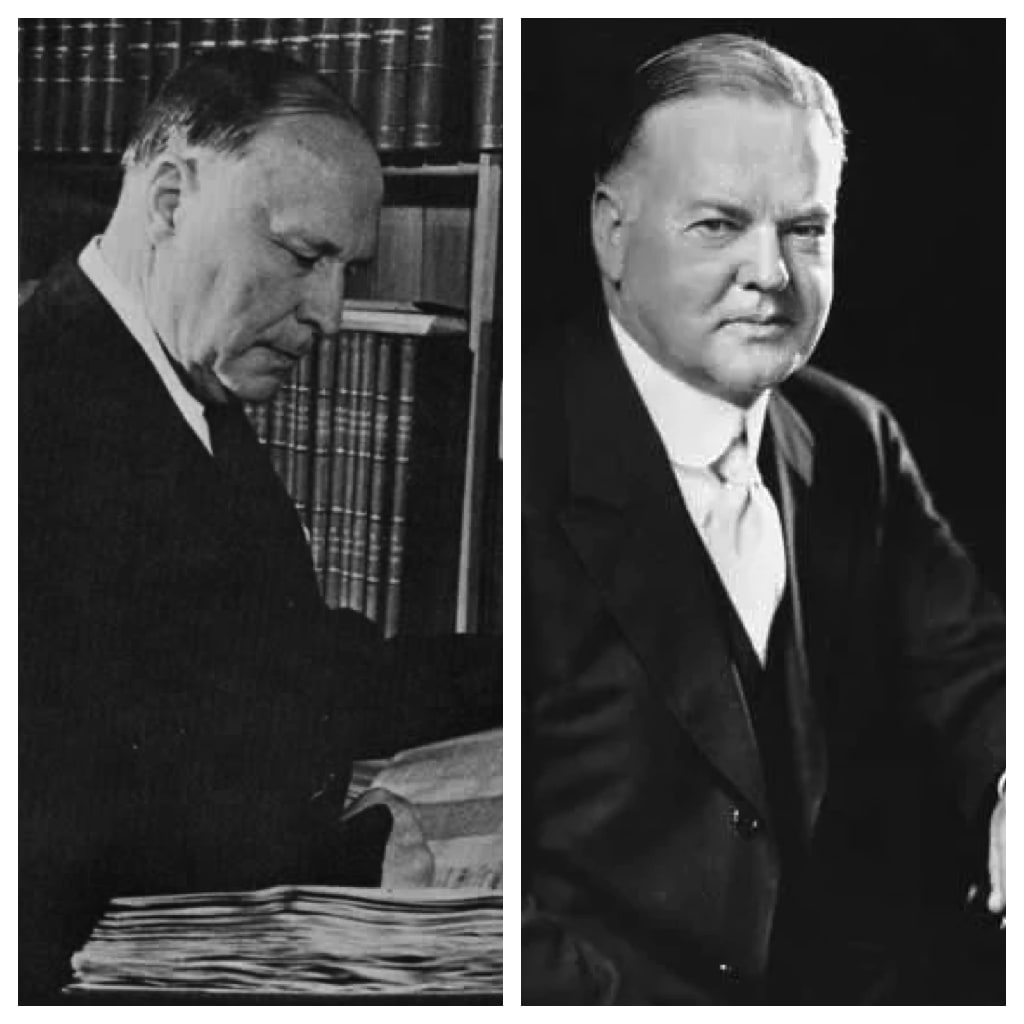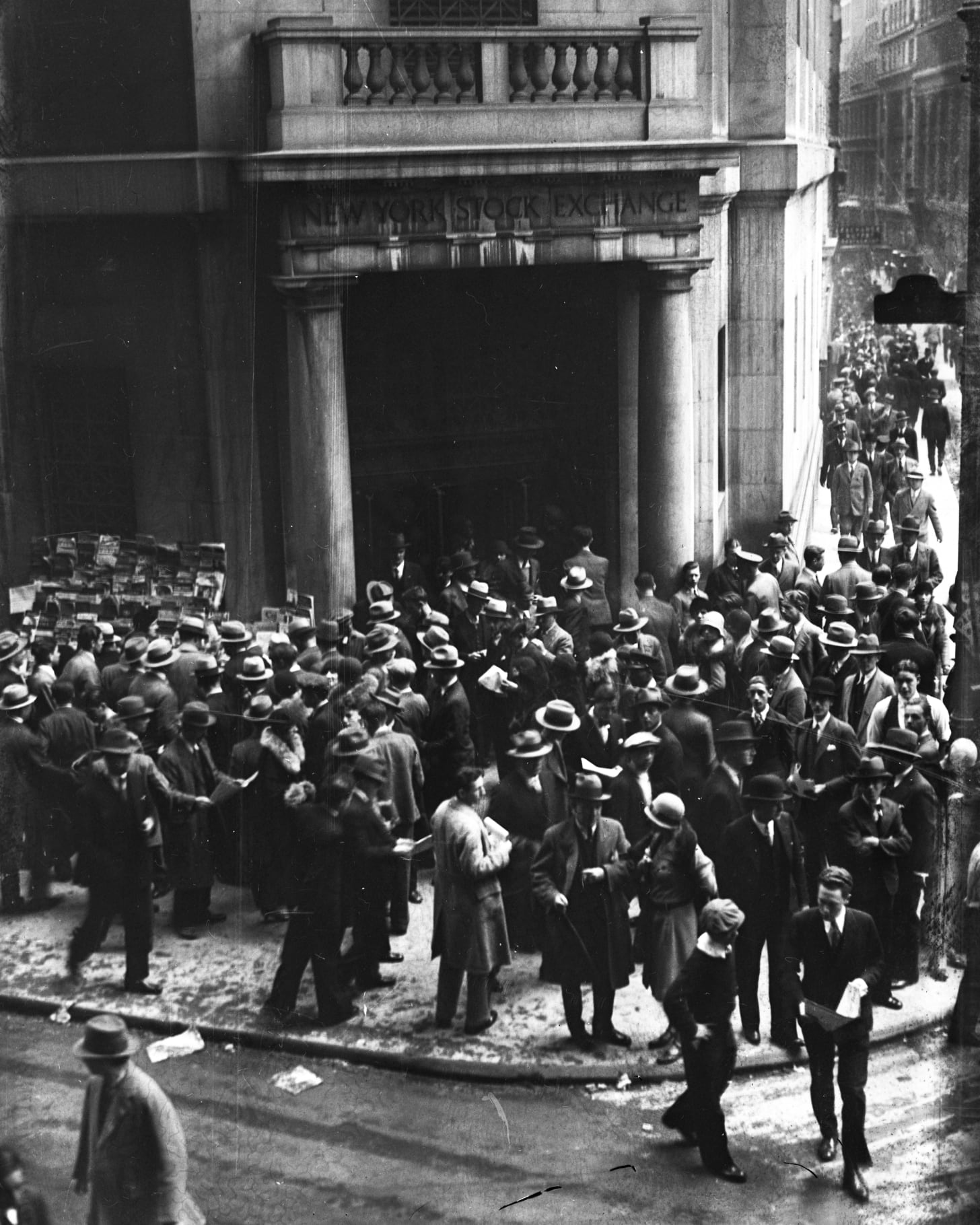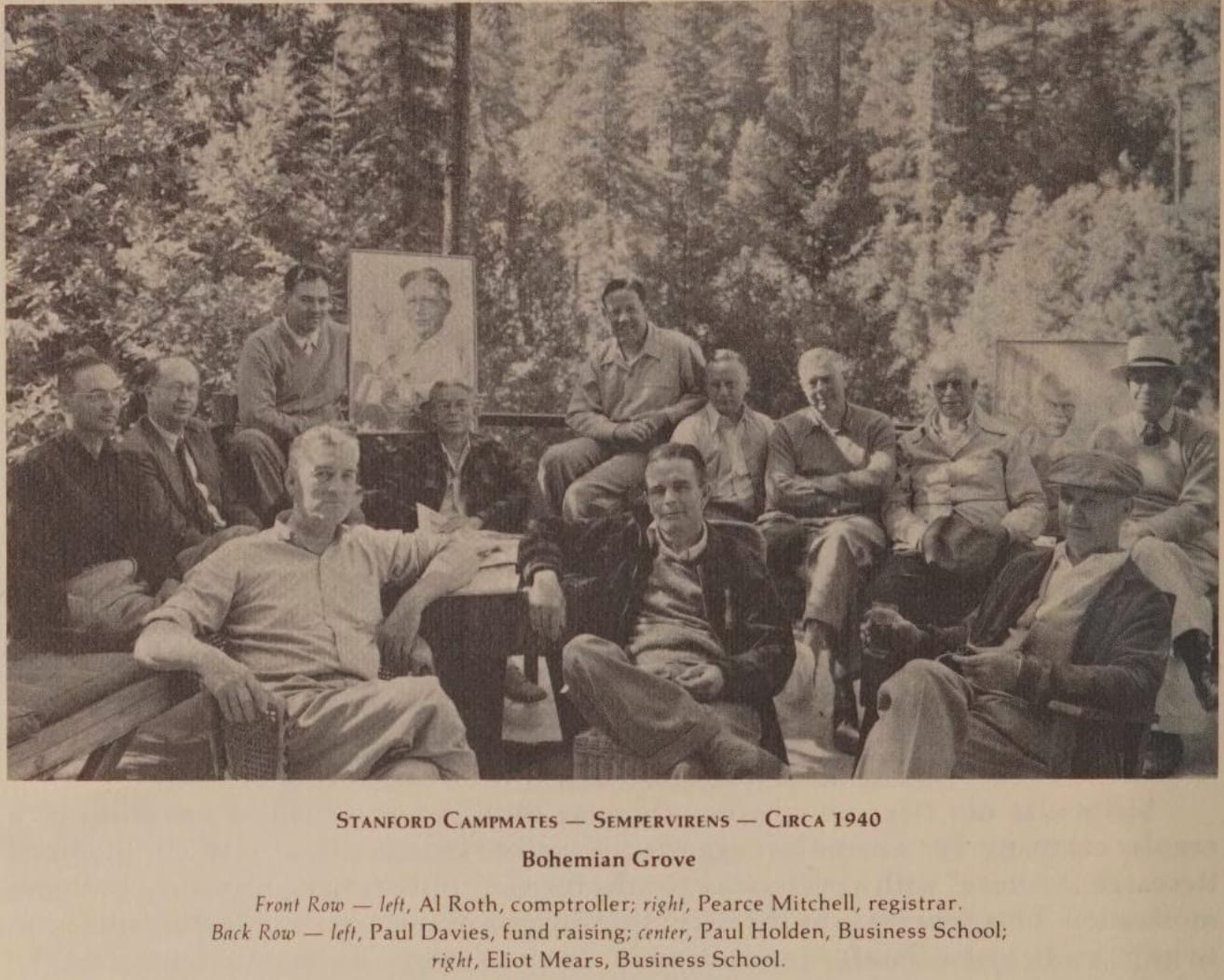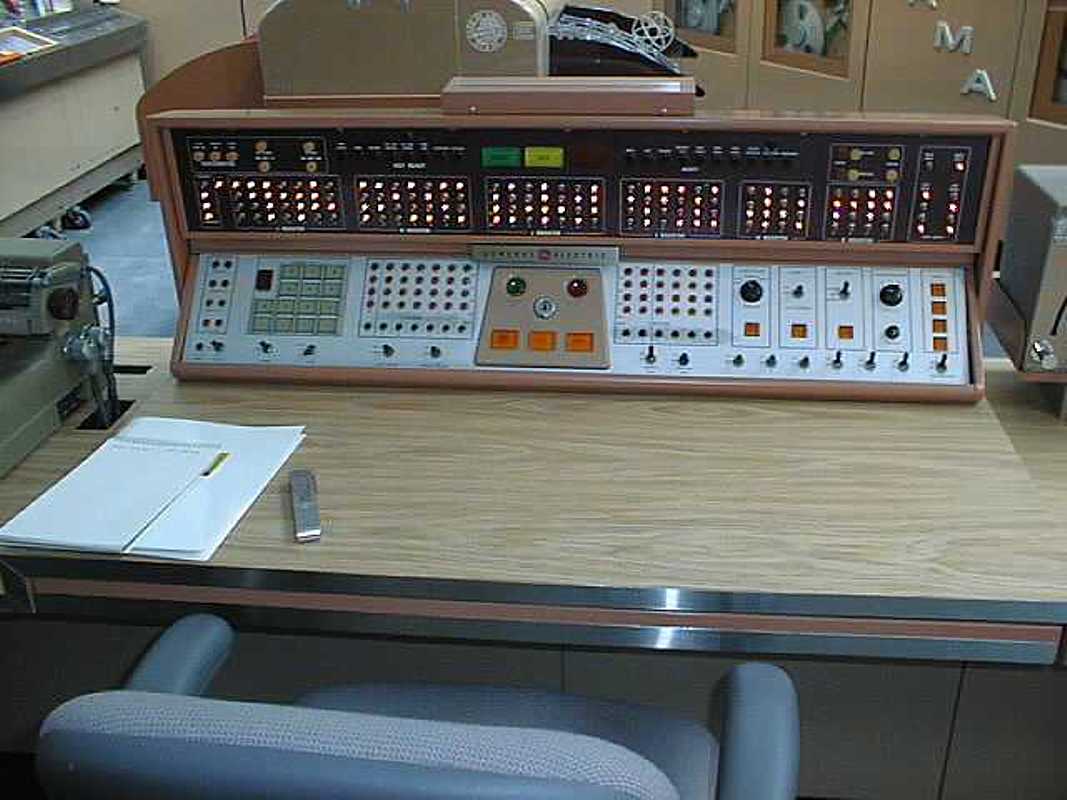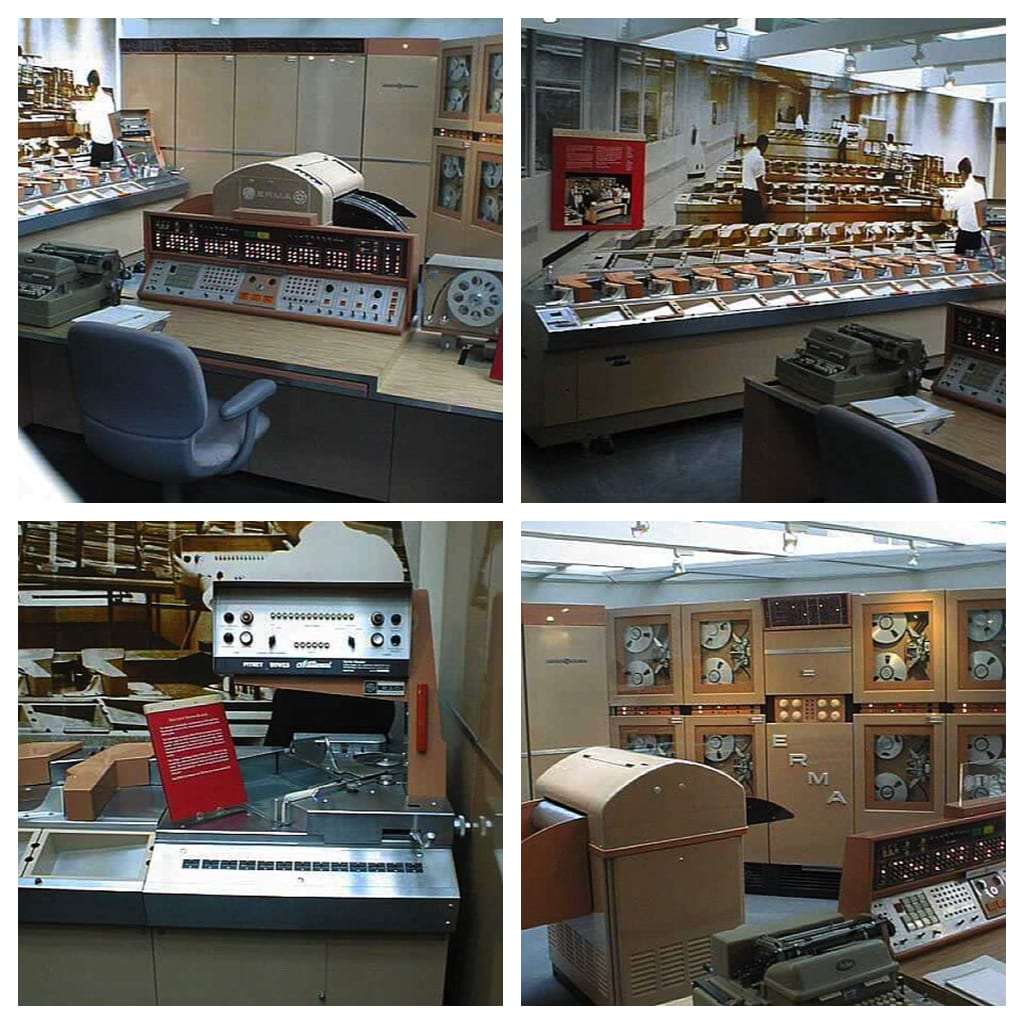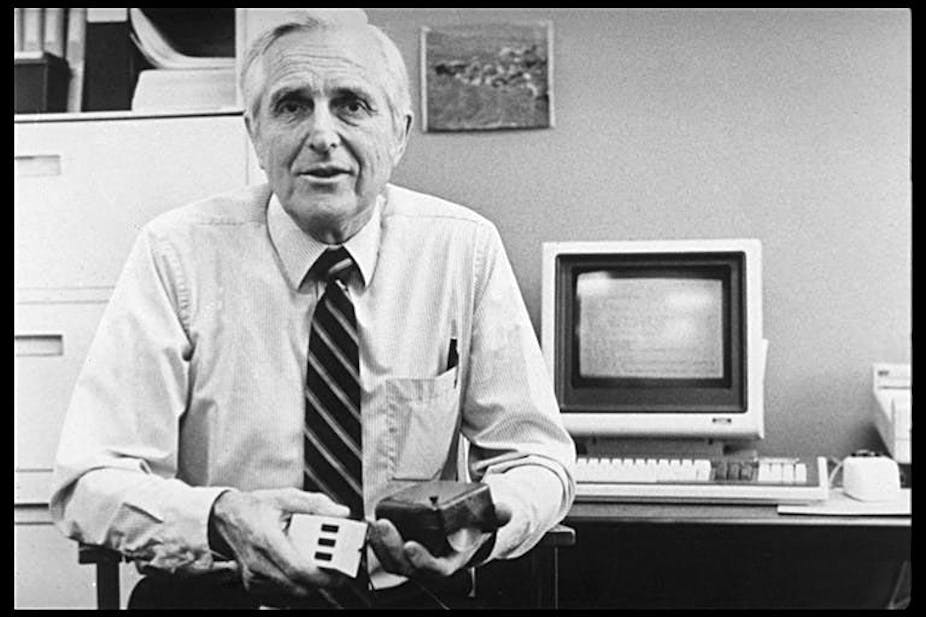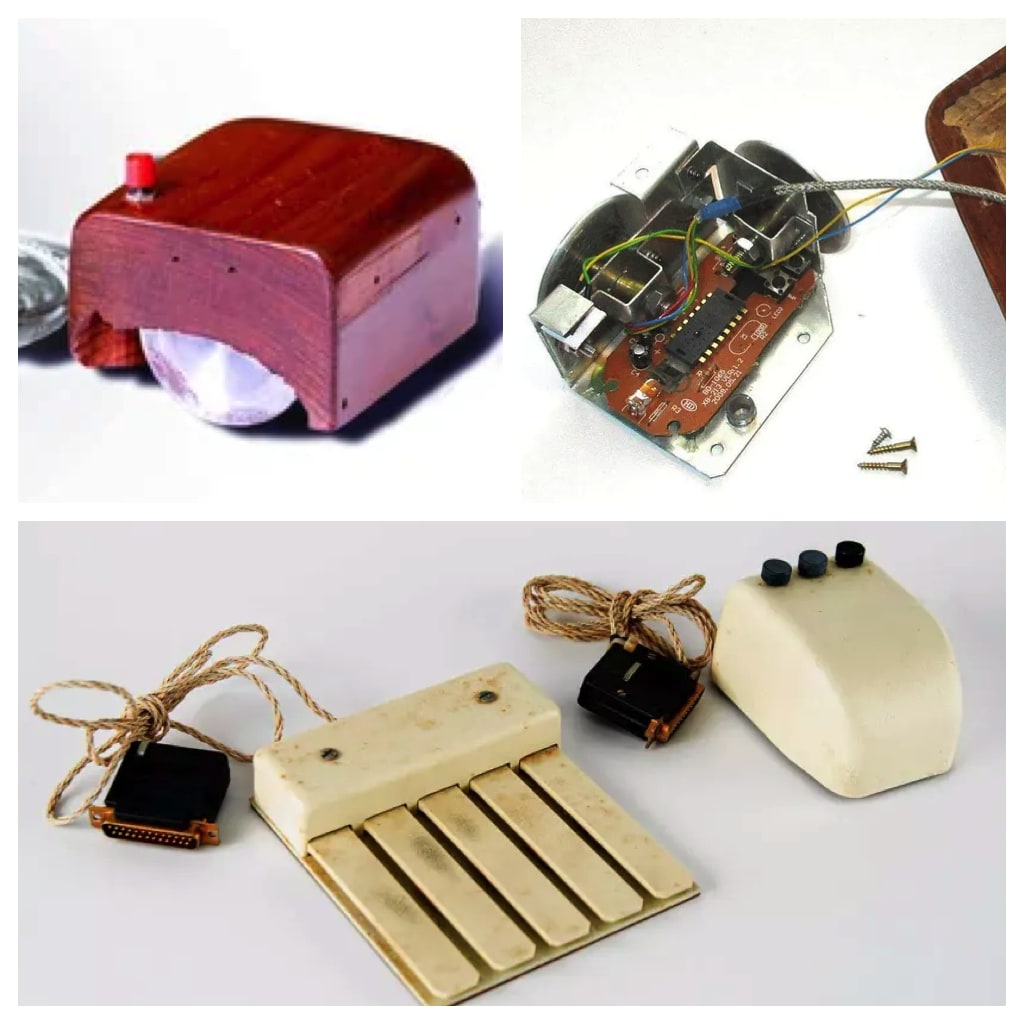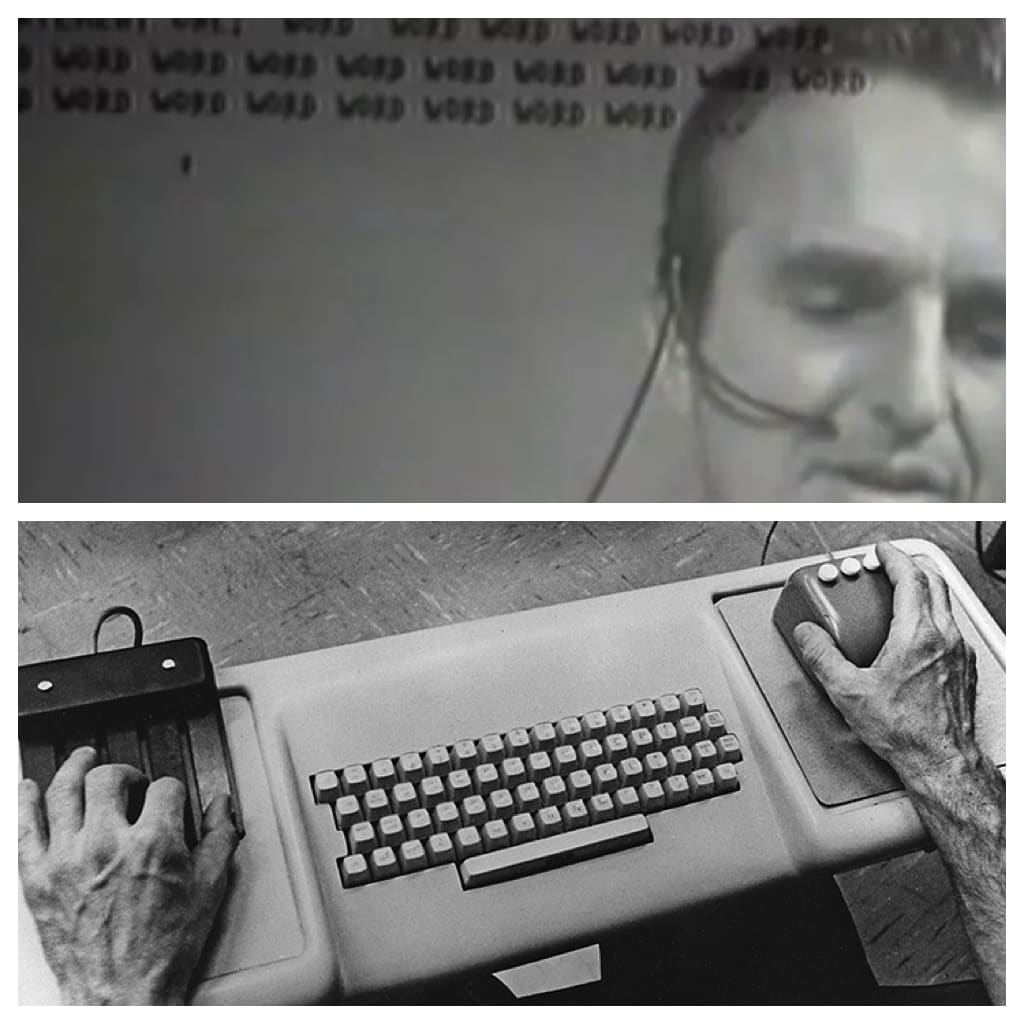Robert Eckles Swain was born on the 5th of January in 1875 in the town of Hollister in California. His father and three others had founded and planned the town, and he was raised on a ranch. Growing up on the ranch, he found himself fishing, hunting, and generally spending his time among the local wildlife. Two years into his upper secondary education, Swain chose to enter Stanford University. He was admitted as a special student in the school’s fourth class of undergraduates in 1894. Under the tutelage of J. M. Stillman, Swain entered the chemistry department. Swain became a teaching assistant in 1898, and he earned his bachelor’s degree in 1899. Having his bachelor’s, Swain was awarded a scholarship to attend Yale. At Yale, he studied biochemistry, and he earned his master’s in 1901, his Ph.D. in 1904. He returned to Stanford and took a post as an assistant professor, became a full professor in 1912, and then succeeded Stillman as the head of the chemistry department in 1917. While serving as a professor, Swain was also a member of the Palo Alto city council (1912 through 1921), and he served as the mayor of Palo Alto from 1914 to 1916.
Around 1925, Swain began thinking that Stanford was in need of some kind of research center that would develop new products and new processes. He was a friend of Stanford alumnus Herbert Hoover, then the Secretary of Commerce in the Coolidge administration, and Hoover visited the university several times in 1926 and 1927. Over the course of two summer encampments of the Bohemian Club in San Francisco, Hoover and Swain discussed the possibilities of a research center within the Stanford family of institutions. Hoover had a feeling that the school should stimulate productivity within American industry, and this was harmonious with Swain’s goals. Hoover then encouraged Swain to speak with Ray Lyman Wilbur (university president), but Hoover went ahead and spoke with Wilbur quite promptly. Swain then spoke with Wilbur over the autumn of 1927. Wilbur gave tentative approval, and asked Swain to make a plan. Hoover, however, then chose to run for President of the United States leaving Swain to do this alone.
Of course, Hoover didn’t let anything like politics get in the way of his interest in the university, and he checked in with Swain several times both during his campaign and during his time as POTUS. With the encouragement of the president of the university and the President of the United States, Swain went about securing commitments of financial support. Among those pledging support were General Electric and the Carnegie Corporation.
Things changed a bit when Wilbur took a leave of absence from Stanford to serve as Secretary of the Interior and Swain took the position of acting president at the school in 1929. With his expanded authority, Swain convened the Committee on a Survey of Research at Stanford, and in a report prepared by this committee addressed to the Secretary of the Interior in Washington, the report predicted that “the great advances of the future will come from bringing more closely together highly trained workers in physics, biology, and chemistry.” The report further elaborated that avoiding duplications of equipment, of research, and of personnel would benefit the university as these fields had many areas of overlapping study.
The world changed on the 24th of October in 1929 as the end of the Roaring Twenties arrived. Following a small drop the day before, many investors resolved to sell, and thus the 24th became known as Black Thursday when the Dow Jones Industrial Average fell by 11%. Within the first 3 minutes of market activity, 3 million shares changed hands. At a time without computerized trading, this would have been a chaotic scene, and that chaos no doubt was replicated around the country as the rapidity of trades was too high for ticker tape machines, and reports of activity were thus hours late. Black Monday, the 28th of October in 1929, was even worse as the Dow lost 12.82%. Black Tuesday arrived on the 29th, and the Dow dropped another 11.73%. By the middle of November, the average had lost half of its value, and despite short term gains in the interim, the Dow closed at 41.22 on the 8th of July in 1932. Banks failed and businesses closed at a rate of 133 per day.
Despite attempts by Swain following the crash, he was unable to gain any serious interest. Wilbur returned to the university following Hoover’s defeat by Roosevelt, and Wilbur doubted that anything could be done amidst the Great Depression; doubts that proved correct as the university was unable to gain donations. Still, Swain promoted the idea when given the opportunity.
By the late 1930s, Swain was nearing retirement, and the cause was taken up by Philip Leighton and Dudley Swim. Leighton and Swim shared Swain’s interests in Stanford and in the Bohemian Club, and they began to see some success only to have their efforts halted by World War II. The war effort took nearly all of the capacity of the university’s dormitories, classrooms, and laboratories. For the course of the war, Stanford (along with many other institutes of higher learning) became an applied research and training center.
Donald B. Tresidder had become the university president on the 21st of January in 1943, and in the summer of 1945 made a visit to Bohemian Grove. During that visit, both Wilbur and Hoover urged him to create a research institute. Swain followed up with him. Then at a large gathering following those initial discussions, Swain, Swim, Leighton, Eliot Mears, Pearce Mitchell, and Paul Holden all gave Tresidder input on the matter. Ultimately, Swim had put forward the idea of a university-owned institute, and Tresidder told him to put it on paper. The memo he drafted was sent to Tresidder, Leighton, and Swain, and it was the first time that the name Stanford Research Institute was used.
Around September of 1945, Swim, Swain, and Leighton began referring to themselves as the three musketeers. For two weeks following that year’s Thanksgiving, they visited research institutes in the midwest and east of the USA, and following that, they met with several industrial leaders around the country. With all of the knowledge they’d gained, they then made a formal proposal. Most of their recommendations were later taken. Tresidder thanked the group, and then began discussions with the Board of Trustees. In truth, however, Tresidder had also been working with a separate group that included Atholl McBean and the school’s vice president Alvin Eurich. As things moved forward, the three musketeers, and particularly Swim, were pushed aside. This was, in no small part, political. Swim was a bit of a loaner, very conservative, and didn’t much care for, as he put it, the business establishment. For a research institute that was intended to work with the business establishment, this wouldn’t have been a good fit. Still, McBean, Tresidder, and Eurich got things done. They were in touch with many people who were all interested in setting up a research institute in the west, they contracted interested parties for advice, for funds, and for personnel.
The Board of Trustees voted to create Stanford Research Institute on the 21st of February in 1946. By autumn, university attorneys were drafting the foundational paperwork, and on the 27th of September Tresidder announced the establishment of SRI with William Fletcher Talbot as the first executive director. The articles of incorporation were filed on the 6th of November in 1946, and the board members were elected: Donald Tresidder, Charles Blyth, John Cushing, Paul Davies, WP Fuller Jr, Atholl McBean, Paul McKee, Donald, Russell, William Stewart, Alvin Eurich, JD Zellerbach. The first SRI board meeting was held on the 8th of January in 1947.
Initial funding was secured from McBean in the amount $15,000 in January of 1946, and he would personally invest $160,000 of his own money by the start of 1957, which would be about $1,878,000 adjusted for inflation at the time of this writing. Corporations at which he had served contributed another $255,000.
Due to a series of disagreements about the direction of the institute and the role of its executive, Talbot resigned in late 1947. William E. Rand and Carsten Steffens ran things until JE Hobson took the role. In 1948, SRI was fewer than 50 people, had around $20,000 in assets, a net worth of around $10,500, and deficits running over $50,000 per year. Despite these struggles, the institute had projects. The Office of US Naval Research was sponsoring a project to develop rubber from the guayule plant (parthenium argentatum), the US Air Force was funding an economic study into the expansion of the US aircraft industry, and Chevron was working with SRI to develop an artificial alternative to tallow and coconut oil in soap (the answer was dodecylbenzene which is used in Tide).
SRI was extremely successful. By 1955, the organization was comprised of around a thousand individuals with $10 million in revenues (more than $121 million in 2025 dollars). Being successful, it was now time for the institute to get a permanent home. The site chosen was Stanford Village in Menlo Park, the first 30.165 acres of which were purchased on the 29th of July in 1955 at a price of $480,000. More land was purchased in 1958 and throughout the 1960s until SRI owned all of Stanford Village.
Back in 1950, the Bank of America had a bit of a problem. The American west was hitting its stride with a major economic boom, and this meant that check processing was becoming increasingly tedious. They needed automation. The company turned to SRI to study the feasibility of automating check processing. This created the MICR project (Magnetic Ink Character Reading) with Ken Eldgredge having invented the method of reliably reading routing and account numbers off of a paper check. MICR had started in November of 1950 with an initial sum of $15000 provided by Bank of America, and another $5000 followed in April, and an interim report was delivered to BofA on the 30th of April in 1951.
Naturally, if one has a method of reading a check, then one should be able to completely automate account settlement. So, SRI proposed a system. This was ERMA, or Electronic Recording Machine Accounting. This project was arranged by SVP S. Clark Beise of Bank of America and SRI’s Director of Engineering Thomas H. Morrin. The tech lead for the project was Jerre Noe at SRI. The contract provided SRI with $875,000 to build a prototype that would demonstrate the system. ERMA was completed in 1955, and both MICR and ERMA were successfully demonstrated in 1956. ERMA was an absolute unit. She weighed 22.7 tonnes, used 80kW of power, and had dedicated air conditioning. This computer was built of a million feet of wire, 8000 vacuum tubes, 34000 diodes, 2 magnetic drum memories, 24 racks, and 12 magnetic tape drives. Beyond the computer and storage mechanisms, the installations included a check sorter, printer, control panel, console, and check reader. The prototype wasn’t programmable, but made use of plugboards for rewiring prior to any given task.
At the time of ERMA’s completion, the BINAC, the first commercial computer, had been delivered just six years prior, and the UNIVAC, the first generally available commercial computer, was just four years old. The IBM 701 was just three years old. SRI had no interest in trying to produce these machines itself, and BofA requested that computer makers bid on building 30 ERMAs for them. Oddly, an organization that didn’t exist at the time won the contract for $31,000,000. This was the General Electric Computer Department, and GE’s corporate offices didn’t know about any of it. This new department came into being specifically for this contract, set up shop in Phoenix, built their manufacturing facility, refined the prototype, and delivered the first system (now named the GE-100) which passed acceptance testing on the 31st of December in 1958. From some first hand accounts, part of the delay in acceptance was training. It took quite some time to train bank employees on the machines, and to get a process in place to ensure that check totals were being printed only with magnetic ink and not any standard black ink. Not everyone understood that the machine wasn’t reading a check the way humans do.
The refinements made by GE were important. vacuum tubes were replaced with transistors, and the plug boards were replaced with software. Shortly after, the drums were replaced with core memories. One other change was the font for the magnetic ink. GE developed E13B which is still in use today. GE delivered a total of 32 of these machines to Bank of America, and they were in use until 1970. The success of this system led to a partnership between SRI and GE to study the commercial computer market, and for Bank of America, the system was so effective that the company was the first to offer credit cards attached to bank accounts. The company was so profitable, they were the world’s largest bank by 1970 when the GE-100 was retired.
Douglas Carl Engelbart was born on the 30th of January in 1925 in Portland, Oregon to Carl Louis Engelbart and Gladys Charlotte Amelia Munson Engelbart. He had an older sister, Dorianne Vadnais, and a younger brother, David. His father started and ran a shop where he sold and repaired radios. When Engelbart was high school, he heard about radar. He chose to study the technology, and after graduating and doing two years at Oregon State, he entered the Navy as a radar technician. He was enlisted from 1944 to 1946, and he was sent to the Pacific. As his ship was departing San Francisco, the Japanese surrendered. He and his shipmates were all yelling for the ship to turn around, but that isn’t quite how the military works. They went to the Philippines, first to Samar and then to Leyte.
On the island of Leyte, Engelbart stumbled upon a Red Cross library. It was a bamboo hut on stilts with a thatched roof, and it was well kept, clean, and filled with books. It was also empty except for Engelbart. There he found a copy of Life magazine within which was As We May Think by Vannevar Bush. Sitting in a hut on a tropical island waiting for a ship, Engelbart’s mind was going a bit crazy with ideas. He was excited, he told anyone who’d listen about it. Still, while this was formative for him, the experience didn’t solidify his career trajectory.
After the Navy, Engelbart went back to Oregon to complete his bachelor’s degree in electrical engineering, which he achieved in 1948. Following his graduation, he went to work for the National Advisory Committee for Aeronautics at the Ames Research Center at Moffett Federal Airfield in Silicon Valley in the electrical section. He, and the others in his section, handled the installation and maintenance of control systems for wind tunnel motors, paging systems, and they generally built and serviced any electrical system that wasn’t instrumentation.
After having been at Ames for two and half years, Engelbart was still a shy bachelor, and one of his friends suggested that a good way to meet girls was folk dancing. He and a fellow who’d been a boxer went over to the Palo Alto Community Center and watched an intermediate class. After a bit, Engelbart moved out onto the dance floor and started dancing. He loved it and started going fairly often. With no family around, he started organizing weekend camping and hiking with others. At one of the folk dancing classes, he met Ballard Fish. They were married on the 5th of May in 1951 at Portola State Park.
From the time that Engelbart got engaged to Fish, he began changing as a person. He was excited about his future, and he began to think about how he wanted the rest of his life to go. Like so many who’d lived through the Depression, marriage and a reliable pay check were really the primary goals. He was just 25 years old, and he realized there were no more major things he’d planned. At some point, it occurred to him that the complexity of problems and the urgency of problems were both increasing, and that if one could do something to improve the human ability to cope with both complexity and urgency then it might prove quite impactful. Within an hour of that conceptualization, he had an image in his mind of sitting at a CRT with all kinds of new and different symbols flying past the screen that could be manipulated via knobs, and buttons, and switches. He imagined colleagues in other rooms at similar machines all tied to the same computers. Englebart did not, at that time, know anything about how computers worked. What he did know was that computers existed, they could do general calculations and logic work, and he knew quite a bit about CRTs from having worked with radar.
Shortly after his marriage, Engelbart applied to both Stanford and Berkeley. He was accepted by both universities but chose the University of California Berkeley as they had a computer program. Specifically, Berkeley was working on the CALDIC (California Digital Computer) project about which Engelbart stated:
It was something sponsored by the Navy, and it had been proposed by Paul Morton, an astronomy professor, who was in the background during the years. I never met him, or talked to him much. Morton was the effective head of the project, and it had been going since I think 1947 or '48. It was one in which the memory would be on a magnetic drum, and built with vacuum tubes. Something that no computer today tries to do, but something the very early ones would do, is that instead of just a string of bits holding the big binary number, this clustered the bits into sets of four, and each four was coded as a decimal number. There are sixteen combinations of those four, but they would only use ten of them. So there'd be four sets of vacuum tubes; each vacuum tube has a double triode inside of it, and a flip-flop circuit in it like that, so these four flip-flops would store and they'd have to have other vacuum tubes that would be used to transfer the state of this set of four over to the next one, a shift. This would be on panels that were exposed, so you could go in and work on it. The tubes would be burning out all the time. I think it worked the magnificent pulse rate of about 250,000 pulses a second. In some of the seminars, people would be talking and questioning, "Do you think we could ever get up to a million pulses a second? Is it just engineering?" And the magnetic storage technology was not so dense, so that drum was about this big around and this tall [gestures], with a lot of fixed heads on it. It stored far, far less information than that much surface area would today. I think it took a sixtieth of a second to spin around, or something like that.
Morton was more than merely the man who proposed the computer, he started the project, oversaw the design and construction, and he also setup the first computer courses and the first computer services on the campus. While he did move into the “background” as Engelbart said, this is likely because Morton was astronomer and not an engineer.
At this time, it wasn’t uncommon for a computer to have a mean time to failure measured in minutes, and CALDIC was one such machine. The ENIAC was likely the most reliable computer in the world having achieved a MTTF of around two days in 1948. Of course, even for a slow computer, five minutes is a lot of time. Astronomers and other STEM-related folks were still eager to get time as the alternative was asking for help from the human computers.
For Engelbart, his interest in the project went from engineering problems like correcting drawings, figuring out shift registers, and other things to how one would manipulate symbols rather than just doing math. The rest of the engineers, however, were uninterested. After speaking to some of the people working in the psychology department, he began researching symbolic logic. Naturally, this led Engelbart into taking formal logic courses in the philosophy department. He was the only engineer in those classes at the time. The other engineers thought it was a waste of time, the philosophy majors all thought his ideas were quite alien, and the liberal arts majors were nearly openly hostile.
As time marched on, it became clear to Engelbart that he’d need something he could use to finish his doctorate. At this point, he recalled the behavior of neon bulbs emitting light when not directly connected to power but just exposed to strong electric fields. He figured he could use these to build circuits, and he started putting together shift registers built in this way. He had to come up with the best gas mixtures, have some tubes specially built by a technician in one of the physical laboratories, and ultimately, he was successful. He labored alone for several months pressured by the need to complete his doctorate as he and his wife had just brought twin girls into the world (their second and third children). Douglas Engelbart earned his Ph.D in Electrical Engineering with a specialty in Computers from UC Berkeley in 1955. CALDIC had become fully operational just the year before.
Needing income, Engelbart began teaching while trying to find a way to capitalize on his recent inventions related to his Ph.D. work. After meeting with a patent attorney, Engelbart formed a corporation, got his patents, and Digital Techniques was born in the summer of 1956. The company was two graduate students, one of Engelbart’s former students, and Engelbart himself working in his basement. It looked as though his little company would be successful with financial backing secured and Hewlett Packard as a potential customer. Yet, this didn’t happen. Unfortunately, the semiconductor was ascendent, and his gas circuits weren’t as efficient. A study came out of SRI suggesting that solid-state devices were going to be the future. Digital Techniques ceased operations in 1957, but it had earned a little money.
By 1957, SRI was well known. To Engelbart, it seemed that this would be a place to pursue an idea, get funding, and commercialize. He spoke to the ERMA team, applied, waited a few months, and was finally accepted, but by the time he’d joined, ERMA had been shutdown as an SRI project. Still, there was work to be done. Much of the team was working on magnetics, and Engelbart picked up more patents along those lines. He did, however, continue thinking about and making some effort toward symbolic manipulation and Memex-like computing.
At this time, Engelbart described SRI as having been a place where people were happy to work on whatever was interesting. Much of whatever got done was then argued about over coffee. I get this impression from him, of a lively atmosphere where engineers were allowing each other to propose things, giving and accepting criticism (usually, but not always, well), refining each others’s thoughts, and then just doing the work. For SRI, however, bringing young talent into the organization was a bit more difficult. Most of the academic world was focused on physics and mathematics, and much less attention was given to what was strategically or commercially valuable. I imagine the onboarding was rough for fresh graduates.
With both older folks and fresh graduates at SRI, most of Engelbart’s colleagues weren’t receptive to his ideas. One of the few who was, was Frank Rosenblatt who’d invented the perceptron and the first neural network. Rosenblatt didn’t work at SRI, he was over at Cornell, but the two apparently spoke some, respected each other, and empathized with each other. For Engelbart, Rosenblatt’s work was important due to having shifted the attitudes of those around him. He found that after Rosenblatt’s Perceptron was introduced, his own work didn’t seem so “kooky,” as he put it.
In October of 1962, Engelbart prepared Augmenting Human Intellect: A Conceptual Framework for the Air Force Office of Scientific Research (SRI Summary Report AFOSR-3223 from SRI Project 3578). The first two paragraphs explain well how Engelbart was thinking:
By “augmenting human intellect” we mean increasing the capability of a man to approach a complex problem situation, to gain comprehension to suit his particular needs, and to derive solutions to problems. Increased capability in this respect is taken to mean a mixture of the following: more-rapid comprehension, better comprehension, the possibility of gaining a useful degree of comprehension in a situation that previously was too complex, speedier solutions, better solutions, and the possibility of finding solutions to problems that before seemed insoluble. And by “complex situations” we include the professional problems of diplomats, executives, social scientists, life scientists, physical scientists, attorneys, designers—whether the problem situation exists for twenty minutes or twenty years. We do not speak of isolated clever tricks that help in particular situations. We refer to a way of life in an integrated domain where hunches, cut-and-try, intangibles, and the human “feel for a situation” usefully co-exist with powerful concepts, streamlined terminology and notation, sophisticated methods, and high-powered electronic aids.
Man’s population and gross product are increasing at a considerable rate, but the complexity of his problems grows still faster, and the urgency with which solutions must be found becomes steadily greater in response to the increased rate of activity and the increasingly global nature of that activity. Augmenting man’s intellect, in the sense defined above, would warrant full pursuit by an enlightened society if there could be shown a reasonable approach and some plausible benefits.
In section two, he then proceeded to explain ways in which technology might generally be able to solve some problems, and then in section three, he gets more specific. Here again, he raises Vannevar Bush’s As We May Think, but what Engelbart imagines is a bit more radical. The first image we are given is two CRTs in a desk that are mounted so that the displays are flush with the desks’s surface. The operator of the system then has a light pen suspended on arms so that as his hands move from keys to pen to screen, it’s a single motion. While typewriter style keys are present, Engelbart also imagines a chorded key set. Then, in software, he imagined the ability to have linking. Any word or abbreviation used in software could be tapped and a dictionary definition retrieved. The most impactful statement, in my comprehension of this writing was:
“Even if I couldn’t actually specify new symbols here any faster than with a typewriter, the extreme flexibility that this computer system provides for making changes in what is presented on the display screen would make me very much more effective in creating finished text than I could ever be on a typewriter.” With this statement, Joe proceeded to show you what he meant. The frame full of your transcribed speech was still showing, and it represented the clumsy phrasing and illogical progression of thought so typical of extemporaneous speech. Joe took the light gun in his right hand, and with a deft flick of it, coordinated with a stroke of his left hand on its keyset, caused the silent and instantaneous deletion of a superfluous word. The word disappeared from the frame, and the rest of the text simultaneously readjusted to present the neat, no-gap, full-line appearance it had had.
In short, Engelbart was discussing a word processor. Chorded key input, light pens as pointing devices, dual displays, hypertext, and a word processor.
The report was well received; in January of 1963, the Advanced Research Projects Agency (ARPA) began funding Engelbart’s research and Engelbart recruited a team. As an interesting note, Joseph Carl Robnett Licklider (JC), had become the leader of the Information Processing Techniques Office (IPTO) at ARPA in October of 1962. Licklider had worked on SAGE, and would later be involved in Project MAC, and then be a founding member of Infocom. Licklider and Engelbart initially disagreed on both hardware choices and development methods, but Engelbart won. Of course, this revealed another issue. The funding from ARPA wouldn’t be enough. A few months in, and Engelbart was a bit despondent. Then, he got a call from a psychologist at NASA’s Langley Research Center, Robert Taylor (later at ARPA), and received more money. Funding was solved.
The team that was recruited was initially the ARNAS project as both ARPA and NASA were sponsoring the work. At some point, someone offered to make it an official laboratory within SRI as the project had grown enough. This began the Augmented Human Intellect Research Center (AHIRC). In 1968, one of the members of the project came to Engelbart somewhat embarrassed and suggested that the name be changed to Augmentation Research Center. Everyone rather expected Engelbart to be flustered, but he said, “Oh, that’s fine.”
Engelbart was dedicated to what he termed bootstrapping. The idea is that a team should develop their tools, use those tools, and make improvements on them to further still more development. With bootstrapping in mind, he and his team began with creating controls for the system. While he’d wanted to get to structured files, computer representations of informational hierarchies, hypertext, and and so on, it occurred to him that he should keep things simple to start, and this meant the keyset and pointing device. Even in the 1960s, various pointing devices existed. The lightpen existed, trackballs existed, and RAND was working on tablet/stylus devices. As members of ARC were trying to come up with an accurate and ergonomic pointing device, Engelbart remembered having written some notes in shirt-pocket sized notebook while sitting through a conference a few years before. It was similar to planimeter, but rather than providing the user the distance traveled over an arbitrary path, it would tell the computer. Bill English used Engelbart’s notes and sketches and developed the computer mouse.
While English was busy building the human interface equipment, Jeff Rulifson joined as the lead programmer in 1966 after the group moved from a CDC 160A to CDC 3100. In 1968, development changed to an SDS 940 running BTS with 96MB of disk storage. This system had what were essentially 16 terminals attached to it. Each had a 5 inch CRT, keyset, mouse, keyboard, headset, and TV camera. The result of this was real-time video conferencing while working. As for what work could be done, the system enabled multi-user hypertext with version control, outline support, windowing, context-aware on-line help, email, basic drawing capabilities, and screen sharing. In today’s terms, one could imagine a real-time collaborative wiki with video conferencing and screen sharing. The totality of this system was called the oN-Line System, or NLS.
NLS was demonstrated on the 9th of December in 1968 at the Fall Joint Computer Conference in San Francisco, and it was absolutely astounding. The computer screen was overlayed on the image of Douglas Engelbart showing him and his screen at the same time, while his voice and the noises of his keyboard, keyset, and mouse could be heard. On the screen, one could see his mouse cursor, text, and what was essentially a window. This demonstration is now, of course, referred to as the Mother of All Demos.
Beyond the system itself, Engelbart envisioned such a system being used everyday, nearly all day, by knowledge workers of various types. He essentially envisioned the modern office with computers as the primary tool of the job. He knew the efficacy of this system because he and his team used it each day.
NLS continued development until 1972 with the first message sent on ARPANET having been done between ARC’s NLS and UCLA. NLS was later sold to Tymshare in 1977 with Engelbart and 19 others becoming employees of Tymshare. Four team members remained at SRI where they joined the Network Information Center (NIC) which had spun out of ARC in 1970. Over the course of ARC’s operation, many employees had become frustrated with Engelbart’s bootstrapping as well as his urging to eventually just move from one thing to another. For example, many people wanted to continue refining the mouse, but he eventually had to push his team to move on to working on other aspects. He had definite goals to pursue after all. These frustrated folks moved to Xerox PARC, and there they continued to develop all of the ideas from NLS.
SRI itself obviously continued. Research covered a variety of fields, but in the realm of computing SRI worked on relational databases (Seaview), text formatting (LaTeX), networking, email, and CALO which was spun off as Siri Inc (acquired by Apple in April of 2010). In April of 2023, Xerox donated PARC and its assets to SRI.
It is fair to say that while EMCC created the computer industry, it was SRI who created the modern world. The global financial system and the modern networked and computer driven office began at SRI, and without these, none of our work today would be possible.
This article didn’t get into the more technical aspects of NLS, but that will eventually be covered. The research on this article took longer than usual, and I had to cut quite a bit due to time and article length.
My dear readers, many of you worked at, ran, or even founded the companies I cover here on ARF, and some of you were present at those companies for the time periods I cover. A few of you have been mentioned by name. All corrections to the record are sincerely welcome, and I would love any additional insights, corrections, or feedback. Please feel free to leave a comment.
.png)

